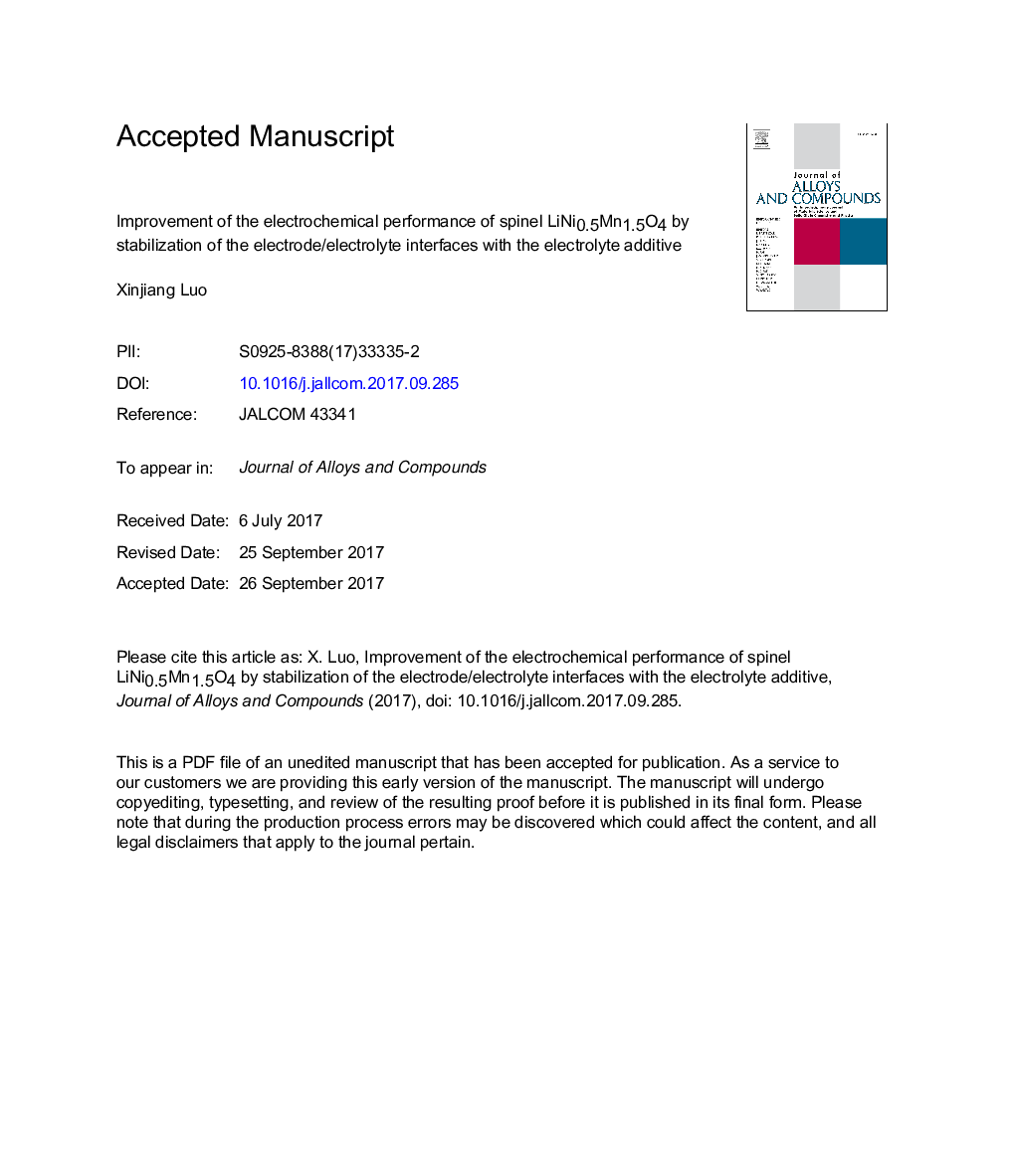| Article ID | Journal | Published Year | Pages | File Type |
|---|---|---|---|---|
| 5458501 | Journal of Alloys and Compounds | 2018 | 26 Pages |
Abstract
High-voltage spinel LiNi0.5Mn1.5O4 cathode results in 4.7Â V Li-ion batteries with a high power capability, but the electrochemical performances are limited by electrode/electrolyte interfacial reactivity at high potential. We demonstrate here that using a new electrolyte additive based on LiFSI, LiNi0.5Mn1.5O4//Li cells upon cycling show reduced capacity fading and improved coulombic efficiency. The capacity retention after 200th cycle is â¼96% using the electrolyte additive, compared with â¼89% without the electrolyte additive. The coulombic efficiency for cells with the electrolyte additive shows an increase from â¼96.5% to â¼98.5%. Detailed X-ray photoelectron spectroscopy and electrochemical impedance spectroscopy measurements reveal that LiPF6 degradation during cycling via formation of a passivation film at the surface of the electrode. Our results further reveals that the surface film is composed of organic compounds resulting from degradation of the electrolyte additive. The formed surface film is much thicker (â¼5Â nm) but less resistive on the electrode cycled with the electrolyte additive, compared with that without the electrolyte additive.
Keywords
Related Topics
Physical Sciences and Engineering
Materials Science
Metals and Alloys
Authors
Xinjiang Luo,
